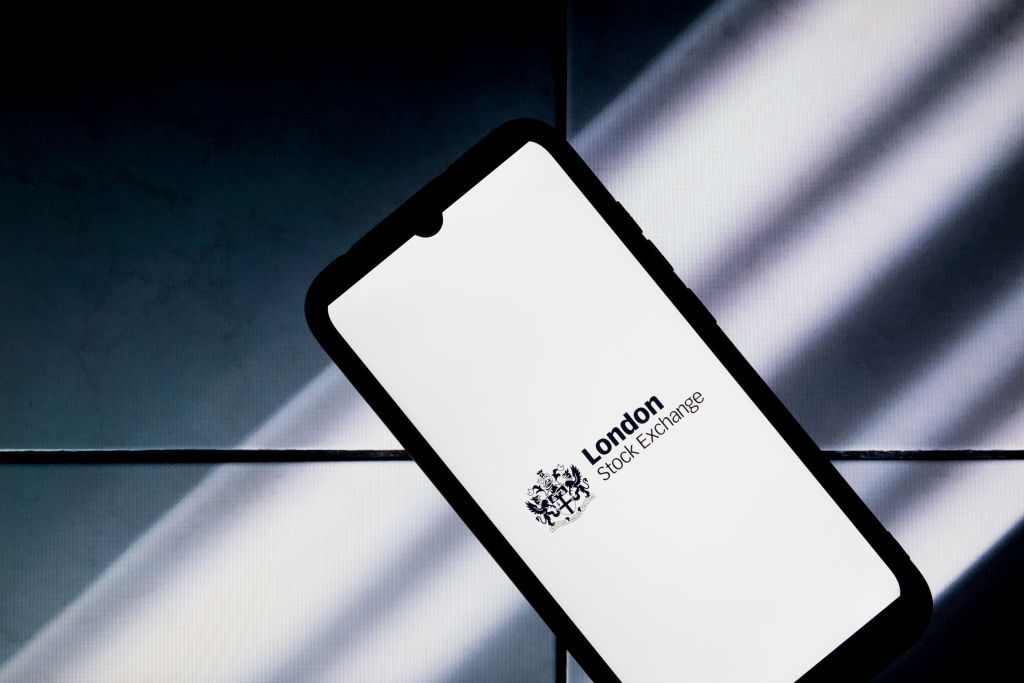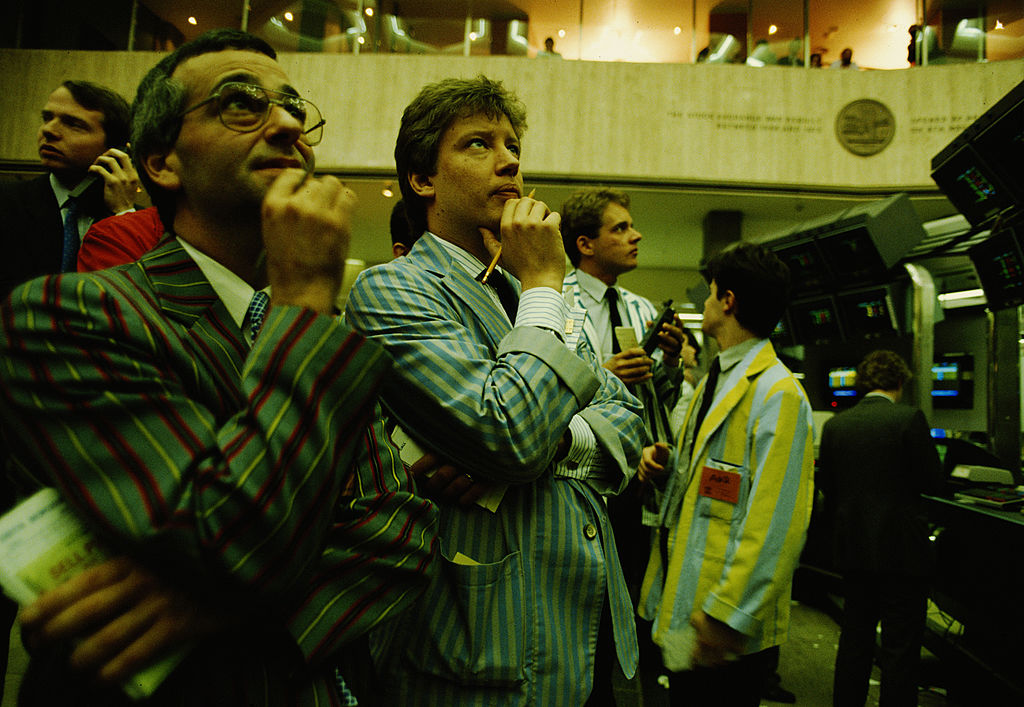Why Amazon is splitting its shares
Slicing a cake into more pieces doesn’t give you more cake. So why is Amazon dividing its shares by 20?


Amazon has just announced a stock split for the first time since the dotcom bubble years. It’s the fourth such split in the company’s near-30-year history. Assuming the move is approved at the annual general meeting in May, then from 6 June, Amazon’s investors will get 19 extra shares for each one they already hold (what’s known as a 20-for-one split). Alphabet – Google’s parent company – did the same thing last month, for only the second time since it went public in 2004.
To be very clear, share splits make no difference to the value of the company. It’s as if I gave you a cake, then said I was going to cut it into 20 slices. You’d still have exactly the same amount of cake (for the pedants out there, we’ll assume no loss to crumbling or sticking to the knife). Yet the share price bounced significantly on the news. So to ask the obvious question: what’s the point of doing this, and why the excitement?
What’s the point?
The rationale often given for stock splits is to reduce the price of an individual share, thus making them more accessible – and indeed, that’s how Amazon spun it. Yet as we note below, this isn’t all that convincing, particularly in these days, when fractional share ownership is possible.
MoneyWeek
Subscribe to MoneyWeek today and get your first six magazine issues absolutely FREE

Sign up to Money Morning
Don't miss the latest investment and personal finances news, market analysis, plus money-saving tips with our free twice-daily newsletter
Don't miss the latest investment and personal finances news, market analysis, plus money-saving tips with our free twice-daily newsletter
Bloomberg’s Jonathan Levin and Eric Savitz in Barron’s suggest a more convincing reason why Amazon and Alphabet might want to consider stock splits. It’s all about getting more exposure to index-tracking funds. How? Alongside the S&P 500, the Dow Jones Industrial Average is the best-known stock index in the US. It comprises 30 big-name US companies. However, it’s built in a way that may have made sense when it was launched in 1896, but no longer does. The S&P 500 – like most headline market indices – is based on market capitalisation (the share price multiplied by the number of shares in issue). In short, the bigger the market cap, the greater its weighting in the index.
By contrast, the Dow is weighted simply by share price. For example, UnitedHealth Group is the top-weighted Dow stock with a share price of around $500. Intel is the lowest, on $45. Yet United’s market cap of $460bn is less than three times that of Intel on $181bn. As a result of this odd methodology, the committee makes sure that the highest-priced stock in the index remains roughly ten times the price of the lowest. That means Amazon or Alphabet on share prices of around $2,500-$3,000 are simply too pricey for the Dow (whereas Apple, a fellow tech giant, is in the Dow with a share price of around $150). A 20-for-one split will put both in the running for the Dow – and all that lovely passive money flow.
Get the latest financial news, insights and expert analysis from our award-winning MoneyWeek team, to help you understand what really matters when it comes to your finances.
John Stepek is a senior reporter at Bloomberg News and a former editor of MoneyWeek magazine. He graduated from Strathclyde University with a degree in psychology in 1996 and has always been fascinated by the gap between the way the market works in theory and the way it works in practice, and by how our deep-rooted instincts work against our best interests as investors.
He started out in journalism by writing articles about the specific business challenges facing family firms. In 2003, he took a job on the finance desk of Teletext, where he spent two years covering the markets and breaking financial news.
His work has been published in Families in Business, Shares magazine, Spear's Magazine, The Sunday Times, and The Spectator among others. He has also appeared as an expert commentator on BBC Radio 4's Today programme, BBC Radio Scotland, Newsnight, Daily Politics and Bloomberg. His first book, on contrarian investing, The Sceptical Investor, was released in March 2019. You can follow John on Twitter at @john_stepek.
-
 Football fans issued warning over ticket scams ahead of 2026 World Cup
Football fans issued warning over ticket scams ahead of 2026 World CupSantander customers lost more to football scams in the first six months of 2025 compared to the same period in 2024, when total losses surged due to the Euros
-
 Nationwide fined £44 million over “inadequate” anti-money laundering systems
Nationwide fined £44 million over “inadequate” anti-money laundering systemsFailings in Nationwide’s financial crime processes between October 2016 to July 2021 meant one criminal was able to deposit £26 million from fraudulent Covid furlough payments in just eight days.
-
 Leading European companies offer long-term growth prospects
Leading European companies offer long-term growth prospectsOpinion Alexander Darwall, lead portfolio manager, European Opportunities Trust, picks three European companies where he'd put his money
-
 Tetragon Financial: An exotic investment trust producing stellar returns
Tetragon Financial: An exotic investment trust producing stellar returnsTetragon Financial has performed very well, but it won't appeal to most investors – there are clear reasons for the huge discount, says Rupert Hargreaves
-
 How to capitalise on the pessimism around Britain's stock market
How to capitalise on the pessimism around Britain's stock marketOpinion There was little in the Budget to prop up Britain's stock market, but opportunities are hiding in plain sight. Investors should take advantage while they can
-
 London claims victory in the Brexit wars
London claims victory in the Brexit warsOpinion JPMorgan Chase's decision to build a new headquarters in London is a huge vote of confidence and a sign that the City will remain Europe's key financial hub
-
 Big Short investor Michael Burry closes hedge fund Scion Capital
Big Short investor Michael Burry closes hedge fund Scion CapitalProfile Michael Burry rightly bet against the US mortgage market before the 2008 crisis. Now he is worried about the AI boom
-
 An “existential crisis” for investment trusts? We’ve heard it all before in the 70s
An “existential crisis” for investment trusts? We’ve heard it all before in the 70sOpinion Those fearing for the future of investment trusts should remember what happened 50 years ago, says Max King
-
 Why UK stocks are set to boom
Why UK stocks are set to boomOpinion Despite Labour, there is scope for UK stocks to make more gains in the years ahead, says Max King
-
 Should ISA investors be forced to hold UK shares?
Should ISA investors be forced to hold UK shares?The UK government would like ISA investors to hold more UK stocks – but many of us are already overexposed
